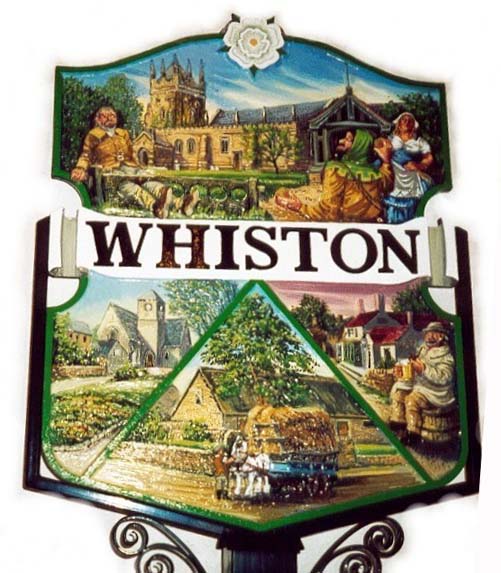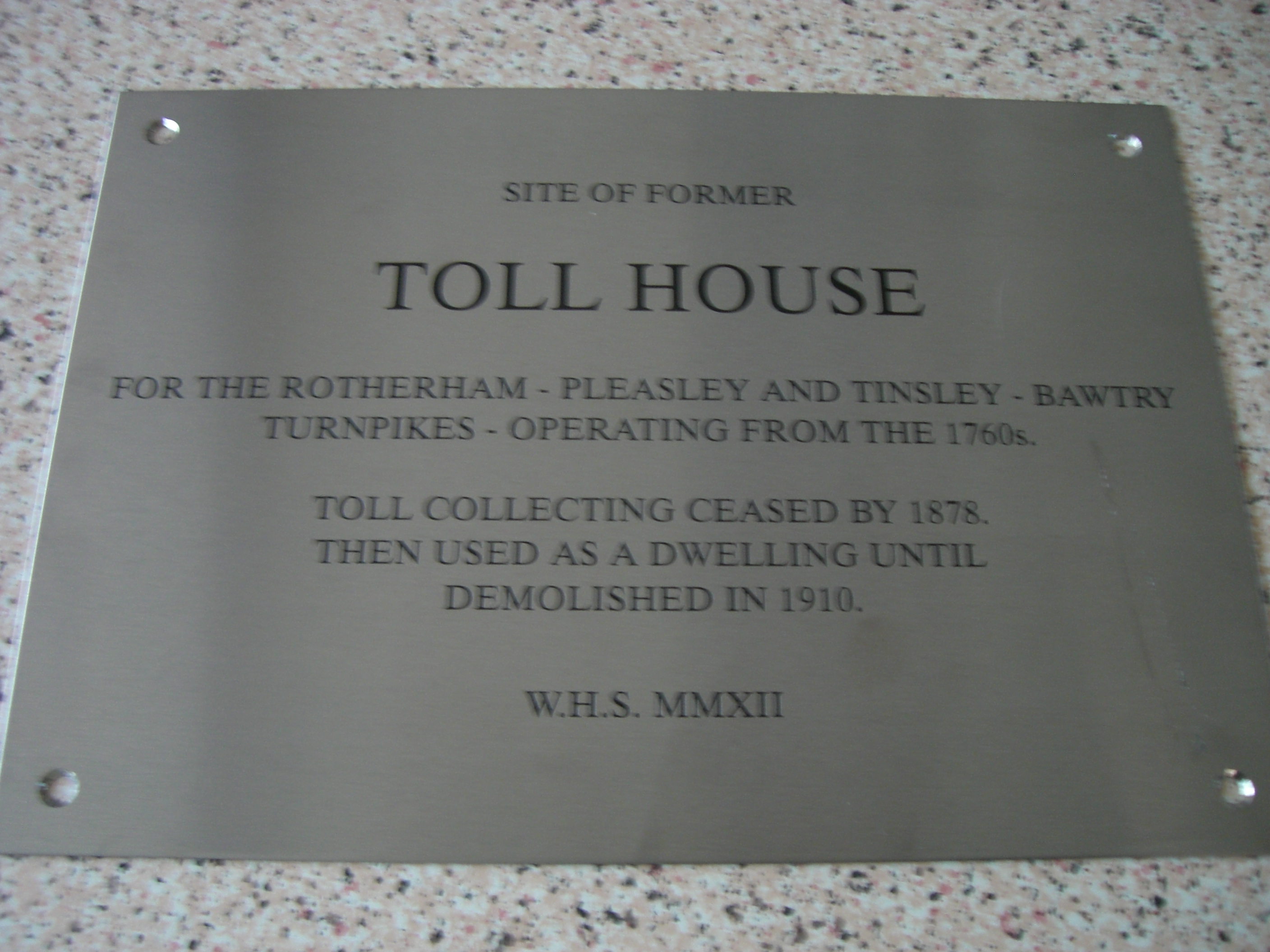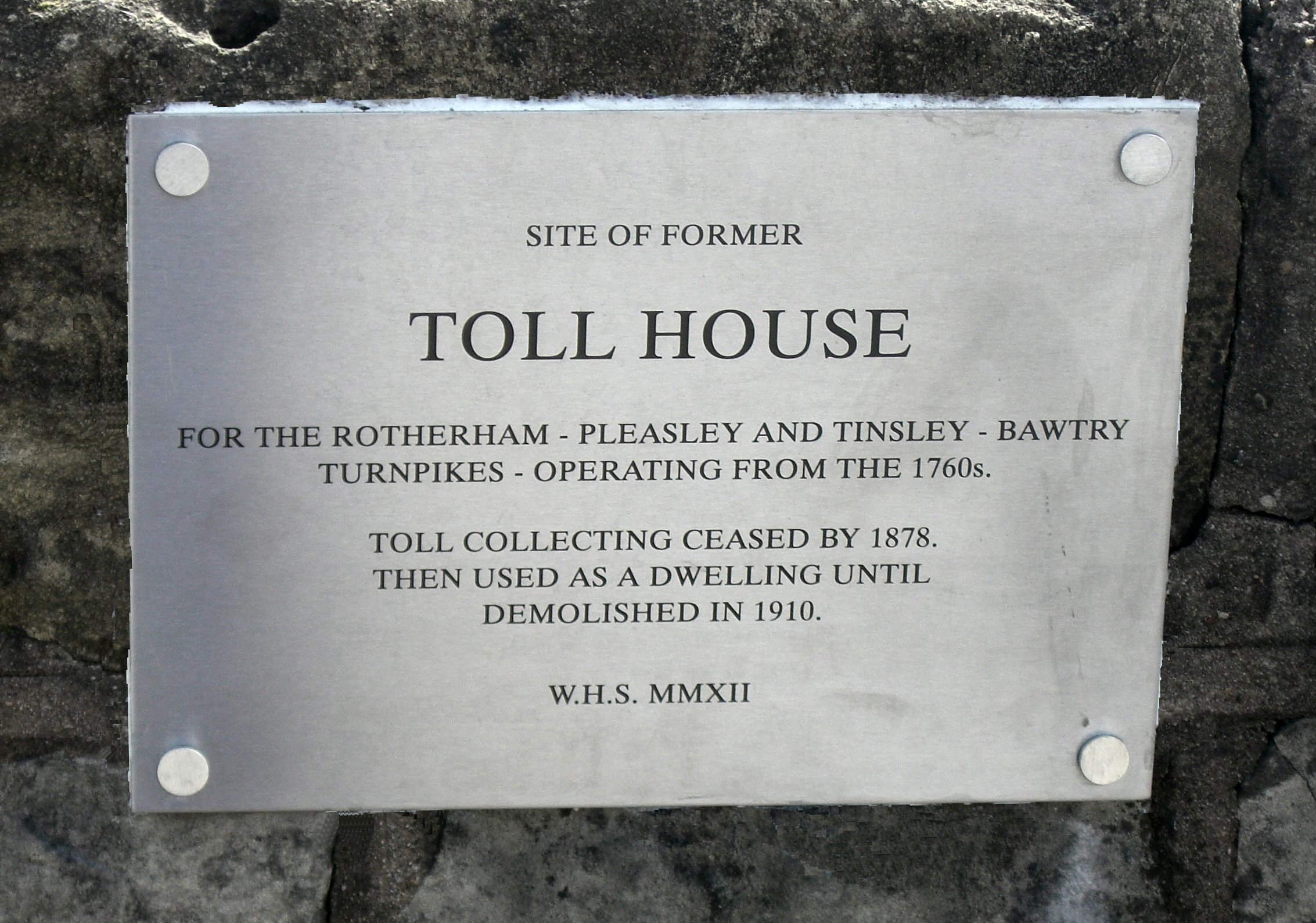Whiston Tollhouse
Turnpiking - the development of privately owned toll roads - came of age in the 18th and early 19th centuries, when trusts were set up to take on the responsibility for stretches of roads. As such, the Rotherham – Pleasley/Mansfield road was turnpiked in 1763. Hunter states that this was one of the main highways to the north of England: connecting London and Nottingham with Wakefield, York and Carlisle. Whiston was situated near to where this road is intersected by the Sheffield - Tickhill/Bawtry Road that had been turnpiked in 1760. These developments are shown in Jeffries' map of 1767-72 (which is useful as showing not only the turnpiked roads but other minor routes as well). Following this, a tollgate was built at Whiston crossroads. This toll bar was a four square little place - a truncated cube - built of red sandstone and so low a child could stretch up and touch the eaves. In addition, the roof was a cone of red pantiles and Keswick apple trees grew in the garden. At night the paraffin lamp burning in the window told that the keeper was still up, ready to demand a toll from those who rode or drove by. Tolls ceased to be levied to Pleasley in 1874 and to Bawtry in 1878 – after which the tollhouse was redundant. It remained in existence however until it was demolished in 1910/11. Early postcards suggest it was used as a small shop.
A different perspective on this is coach travel; which started in the 1660s and was strictly for the rich. It does not appear that many, if any, coach services made use of the main road through Whiston. First of all, the initial Royal Mail coach (a service first started to Bath in 1784) ran between London and Yorkshire in 1785 but did not reach Rotherham until 1796. There were a number of local coach services – the most popular destination in the area being between Sheffield and Rotherham – a route also favoured by carriers. Roads were furnished with milestones and, by law, after 1793, by signposts. Evidence of later milestones can still be seen on both roads close to the crossroads.
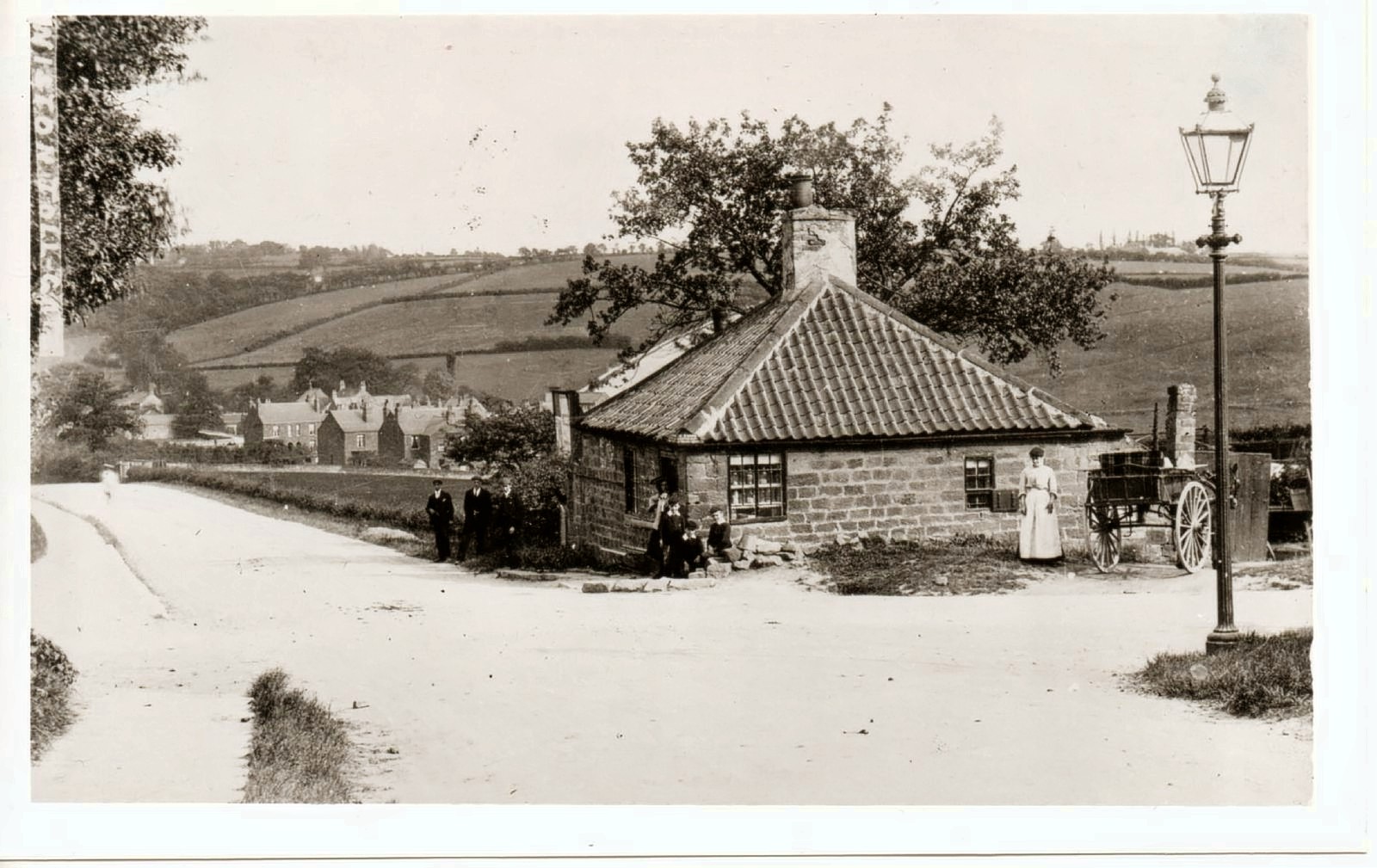
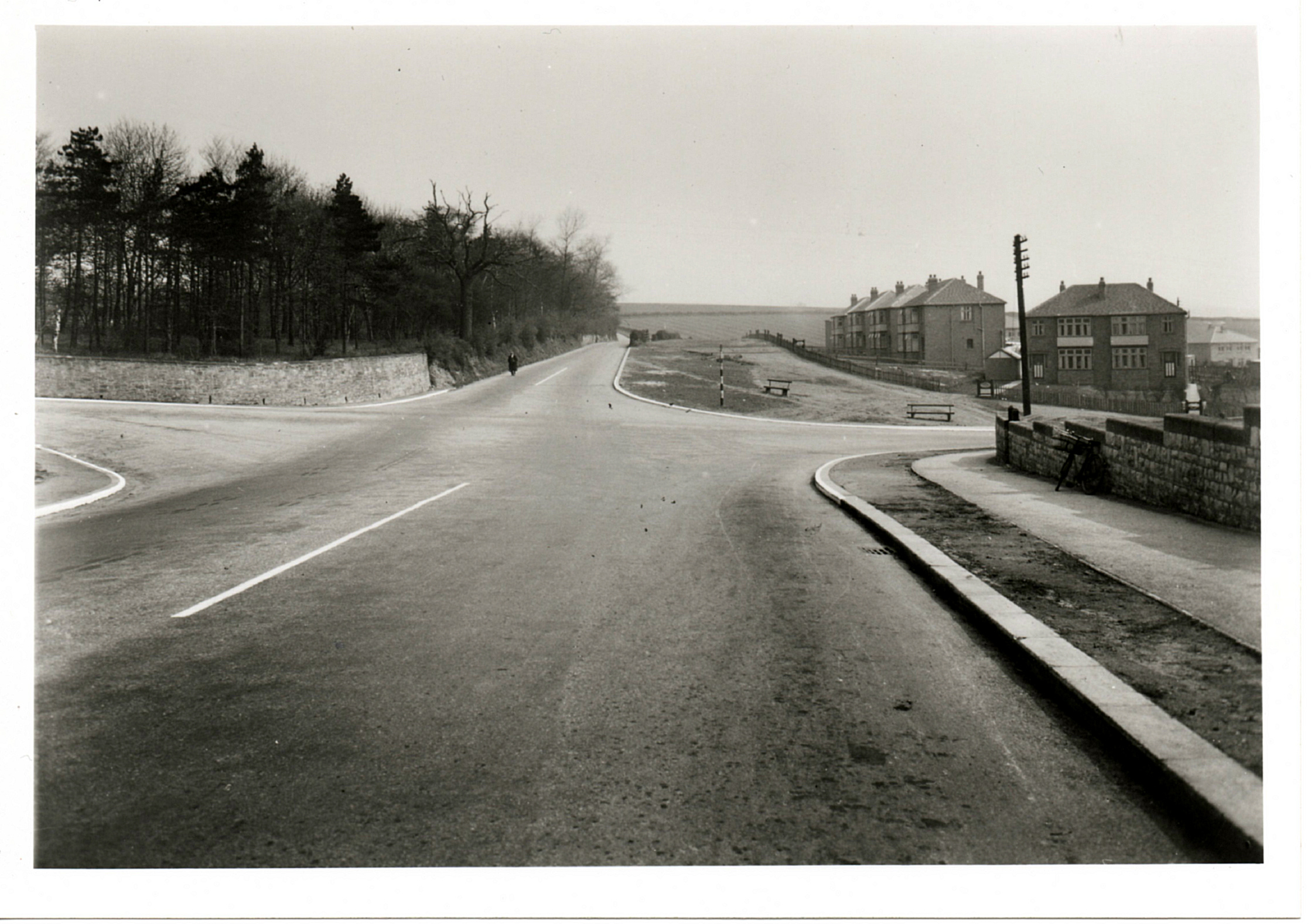
The toll house stood at Whiston Crossroads, at the junction of two turnpike roads which were operational in this configuration up until the 1870s.
In 1841 the Toll House is specifically mentioned and the Toll Keeper is named as Charles Popplewell together his wife Martha, their son Robert and daughter Margaret. What happened to the Popplewell family later is not known for certain as they cannot be located in the Census returns. Thus we can only guess as to how long they were the toll collectors in Whiston.
Next, newspaper entries for 1845 and 1846 mention the letting of tolls for the Pleasley Turnpike. Two tolls were to be let together i.e. Whiston and Aughton; the expected sum in 1845 was £191 but in 1846 this had fallen to £100.
What is more, in 1851 the Toll Bar House was inhabited by William Grey (a boot and shoe maker), his wife and his father Job - a labourer. There is also a reference to Whiston Old Barr in the same section of the Census: "occupied by William Hartley and his family" – he is a farm labourer.
Then in 1861 a toll collector is not mentioned in the Census; and William Grey, his wife (now with six children) and his brother in law are listed - according to the 'occupation' entry - as Cordwainers. His residence is given as Toll Bar, which suggests he was still living there – perhaps he collected the tolls as well as being a cordwainer.
Another perspective on this is Drake's Directory of 1862, which does however name Thomas Betts as the Toll Collector. In the 1861 Census he is listed as the toll collector at the Chain Toll Bar House at Kimberworth, so perhaps he moved to Whiston in the next year; which raises the question of whether he then occupied the Toll Bar House - forcing the Grey family to move?
The last toll collector listed is in the 1871 Census. His name was Sutton Gurnell: at the time he was 58 and he, his wife and three grown children all lived in the toll house – which later photographs reveal to be a small structure. Sutton had not been there for very long as, in 1861, he was listed as the toll collector at Clarborough on the Retford to Gainsborough Turnpike. When the tolls ceased to be collected Sutton would lose his job and probably the toll house as well. Though to date we are not certain who was occupying the building in 1881. Sutton and his wife continued to live in the village, quite probably on The Green as this is where his wife was registered as living in 1891. However in 1881 Sutton was listed as a Licensed Hawker – as he would need to take up further work given that old age pensions (or even anything similar to them) did not yet exist. Finally Sutton's death is registered as June 1888.
There are many pictures available of the toll house: most taken after it had become just a dwelling place. There are some suggestions that tobacco was sold there. Furthermore in Victorian Rotherham, a Mr Mumford indicates that a John Evans lived there in the 1880s. But there is little evidence to support this as he cannot be located in 1881. Nevertheless one postcard does show a board with the name 'J. Evans' on it and this probably refers to the 1901 inhabitant – Joseph Evans (who was originally from Leicestershire and was married to Eliza). If they indeed sold tobacco from toll house then she was probably responsible for most of the transactions – as Joseph was listed in that years' Census as being a Coal Miner. Moreover, the couple had two children Reginald (12) and Edith (9) who were both born in Whiston. Indeed he had been living in the village in 1891 too, but later lived on Moorhouse. By which point the occupier of the toll house was a farm labourer - John Fielding - and his family. It is likely that these people would not have owned the cottage but instead paid rent for it.
By way of conclusion, Mr Munford suggested that the Toll House was demolished in 1900, but given that there is evidence of its occupation in 1901 (above) this was not likely. As a result the revised date for demolition is now suggested as c. 1910.
Tollhouse Plaque
In 2012, the society commissioned a plaque (below) to commemorate the toll house and the role it played in village life. This was delivered in autumn 2012 and, in early 2013, was installed at Whiston Crossroads - as near as possible to the building's original location.
